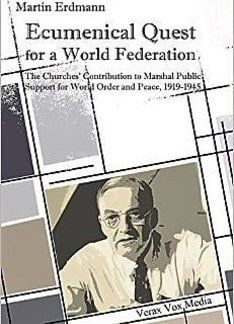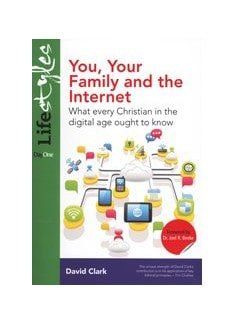Visualisation
Our next subject is ‘visualisation’. Some years ago, Karen Mains wrote a book, Lonely no more, in which she chronicled her journey into Jungian psychology, visualisation and the occult. By doing so she effectively torpedoed the ministry of ‘Chapel of the Air’ run by herself and her husband David.
She denied any involvement with the occult, of course, but judge for yourself. Mains describes dreams about her ‘male-self’ — a man she called Eddie Bishop. ‘He was tall … well formed and trim, somewhere in his early thirties … His fine, dark hair fell in a thick lock across his forehead … his blue-grey eyes looking earnestly into mine’.
The details of his communication are specific: ‘”You are everything I have ever wanted spiritually”, he said before I [in the dream] started to drive away’. Mains claims that this experience has taken place ‘six or eight times a year for the last four or five years’1 and has had a ‘positively profound effect’ on her, compelling her to seek psycho-spiritual counsel.
At a later session with her ‘spiritual director’ at Cenacle (a Catholic contemplative retreat centre) Mains tells of a drastic change in the entity which has been appearing in her mind.
She describes an ‘idiot-child sitting at a table with other people. Its head totally bald and lolled to one side. It was drooling and seemed to be six, seven or eight years of age … It was so emaciated and malnourished … He turned his sad, huge eyes on me and smiled sweetly … This is my idiot-child, the idiot-self of my self’.2
Jungian concepts
Her ‘spiritual director’ has her close her eyes and see the child again. She does so and begins to communicate with the image — who surprises them both by revealing that it is the ‘Christ child’.
Mains ponders the thought that the young man and the idiot-child are both Jesus Christ who has ‘been attempting to woo me because an essential part of my identity in him has been expelled from my adult development’.3
We find that this ‘Christ child’ is her ‘spiritual authority’ which she is ‘afraid of having’ and has ‘rejected not only [as] a part of myself, but a part of myself that is Christ’.4 While she admits that the psychological concept of the male-within-the-female (and
vice versa) was developed by Carl Jung, she has always seen it as scriptural.5
Of her visualised experiences Mains writes, ‘Through my hardships I discover there’s a small part of myself that hasn’t grown whole along with the rest of me. It’s been maimed by neglect during years of married life. I call it my “idiot-self”.
‘I’m discovering that this malnourished orphan needs to be nursed and nurtured. I must find the idiot-self creeping about in the infrastructure of my soul … Self of my self, this abandoned child is very much a part of me… 6
Occult healing?
The spiritual path that Karen Mains describes in Lonely no more can easily be found in most occult spiritual transformation books.
An uproar ensued following the book’s publication and it was immediately removed from Christian bookshelves and taken out of print, but not before irreparable damage was done. The people of God were just not ready for a heavy dose of visualisation and occultic practices at the time.
Fast forward a dozen years, and today’s spiritual landscape is apparently more accommodating for such techniques. David Seamand, a frequent guest on such programs as ‘Focus on the Family’ has written a number of books advocating ‘Christian’ visualisation including,
Healing for damaged emotionsand Healing of memories.
Recently, popular author and theologian Gregory Boyd has written a similar book entitled
Seeing is believing — a clear example of how occultic visualisation practices are creeping into Evangelicalism.
Not what we believe
Boyd’s thesis is that, ‘It’s not what we believe intellectually that impacts us; it’s what we experience as real’.7 Experience is the key word — used hundreds of times in this small volume (57 times in the eight page introduction alone).
How does one go about experiencing Jesus? Using 2 Corinthians 3:17-4:6 as his main text, Boyd tells us that imagination, when guided by the Holy Spirit and submitted to the authority of Scripture, is our main receptor of the spiritual world.8
The problem is (he says) that our Western mindset rejects imagination as make-believe (pp.72, 86, 95, 127-128, 134, 205). So it is necessary to reject this worldview and adopt an Eastern, mystical approach instead. When this happens we begin to use our imagination to discover the real Jesus.9
The most disturbing part of Boyd’s ‘imaginative prayer’ methodology is that it evolves into New Age visualisation. Boyd does not deny this; he only asks that his program should not be condemned through guilt by association.10
Contacting the spirit world
In ‘visualisation’ an imagined image (such as the spirit-guide in New Age mysticism) actually comes alive and begins to act independently of the person who is doing the imagining. At this point it may well be that contact has been made with the spirit world — something clearly condemned by Scripture.
Boyd gives numerous examples such as this one. ‘Sometimes as I rest with the Lord he will say something unexpected like, “Are you ready for more of my freedom?”’ Then ‘Jesus’ leads him to some memory from his past and reconstructs it.
This is not wholesome imagination but the altering of reality — or, worse, contact with the spirit world (he naively assumes the spirit speaking to him is really Jesus). Boyd maintains that only in this manner can a person grow in his knowledge of Christ or have his memories healed.11
Defining visualisation
John Weldon and John Ankerberg tell us, ‘Visualisation is the use of mental concentration and directed imagery in the attempt to secure particular goals — whether physical, psychological, vocational, educational or spiritual. Visualisation attempts to program the mind to discover inner power and guidance.
‘It is often used as a means to, or in conjunction with, altered states of consciousness (e.g. as produced by meditation) and is frequently used to develop psychic abilities or make contact with spirits’.12
Visualisation is being used today not only in the occult but also in New Age medicine to manipulate ‘mystical life energies’; in education to tap the ‘higher self’ and its powers; in psychotherapy; and in the church to bring about ‘inner healing’.
Visualisation must be distinguished from imagination. Healthy imagination is a good gift from God, but visualisation is something very different. In visualisation a person is attempting to either directly alter his perception of reality or else make contact with the spirit world. Both of these practices are condemned in Scripture.
Using vivid images
David Hunt distinguishes visualisation from the non-occult use of the imagination. He observes: ‘The visualisation we are concerned with is an ancient witchcraft technique that has been at the heart of shamanism for thousands of years, yet is gaining increasing acceptance in today’s secular world and now more and more within the church.
‘It attempts to use vivid images held in the mind as a means of healing diseases, creating wealth, and otherwise manipulating reality. Strangely enough, a number of Christian leaders teach and practice these same techniques in the name of Christ, without recognizing them for what they are’.13
A practitioner of visualisation describes it thus: ‘Programmed visualisation … is the deliberate use of the power of your own mind to create your own reality … there is nothing too insignificant or too grand for you to visualise. Our lives are limited by what we see as possible … A basic rule of visualisation is: you can use visualisation to have whatever you
want, but you must really, really want what you visualise’(emphases in original).14
Contrast
Visualisation has gained popularity in Western culture as Eastern mystical thought has invaded and been increasingly accepted. This has happened because visualisation fits best with a pantheistic worldview — one that sees humans as divine and creators of their own reality.
Visualisation is a technique that supposedly taps the higher self and initiates contact with the ultimate cosmic reality.
By contrast, the Scriptures neither teach nor encourage visualisation. It produces neither spiritual growth nor healing (whether of memories, the body or the soul). Rather, we are called to be renewed daily by the Holy Spirit, through prayer and the Word of God.
References
1-6.
Karen Burton Mains, Lonely no more(Dallas, Word Publishing, 1993); respectively pp.114-115; 123; 124; 124; 115; 71.
7-11.
Gregory A. Boyd, Seeing Is Believing(Grand Rapids, Baker Books, 2004); respectively: pp.12; 196; 72; 86; 95; 127-128; 134; 205; 117-134; 114.
12.
John Weldon and John Ankerberg, ‘Visualisation: God-Given Power or New Age Danger?’ Christian Research Journal, Summer 1996, p.26.
13.
David Hunt and T. A. McMahon, TheSeduction of Christianity (Eugene, Oregon, Harvest House, 1984), p.124.
14.
Adelaide Bry, Visualisation: Directing the movies of your mind(New York, Barnes & Noble Books, 1979), p.1.













